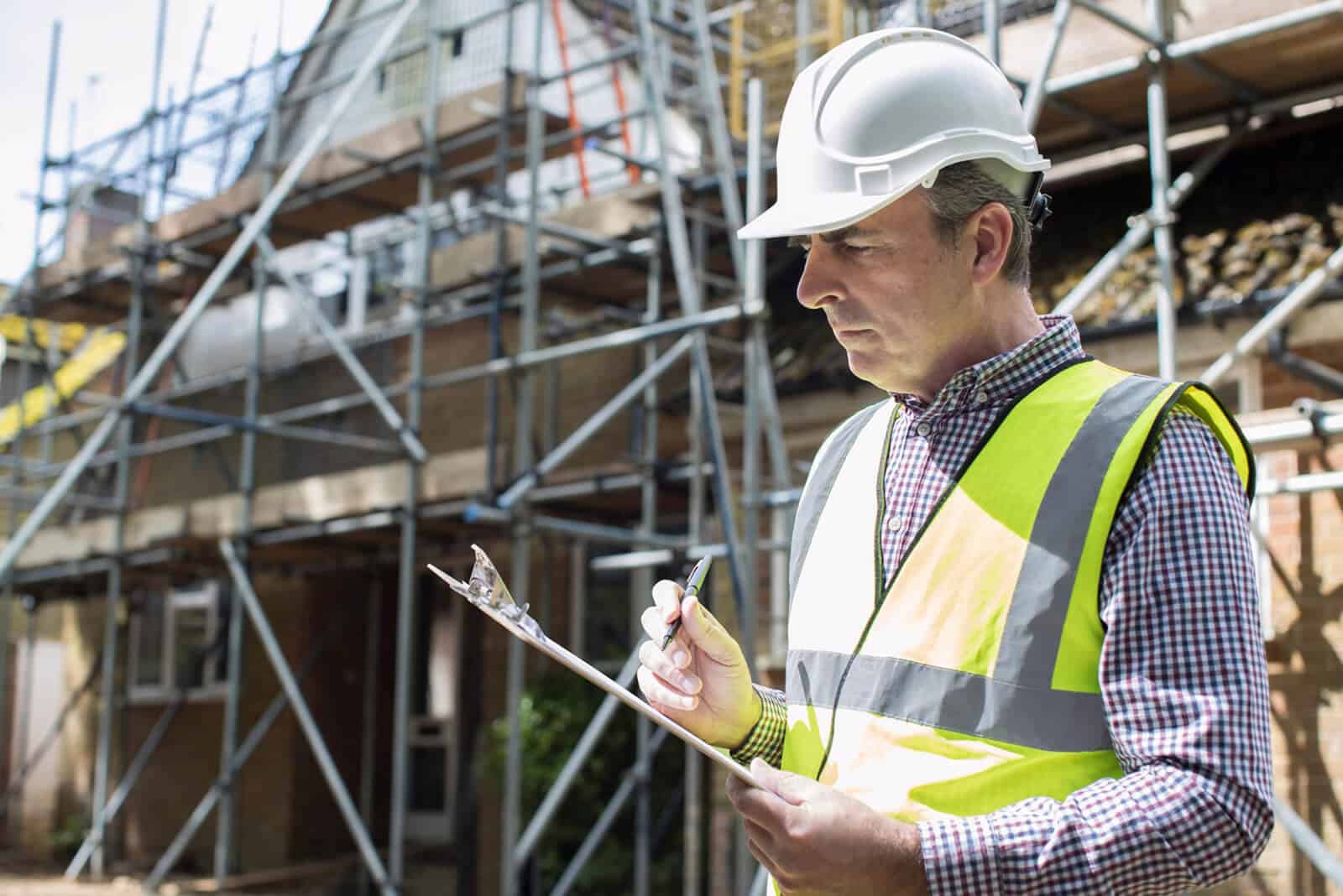
How To Be Your Own Project Manager: What You Need To Know
This blog will explain what it takes for you to be your own project manager.
At some point as a property owner, you’ll probably grow tired of the décor, require additional space, or simply fancy a change. If you’re undertaking a smaller project, you may be able to get by with ‘winging it’, provided you make some basic initial plans and provisions.
For larger projects however, you’ll need to make sure everything is organised and accounted for - for example timings of the project, and scheduling contractors. This is usually the dedicated role of a project manager due to the level of expertise required and potential for error. If budgets are tight, however, or if you fancy a rewarding challenge, you may be tempted to give it a go yourself.
Starting Point - the Three Types of Renovation
Whether you’re attempting to be your own project manager, or are going to enlist assistance, it’s useful to know the three types of renovation. Briefly, these are:
- Extensions - where the fabric of the building is fundamentally altered, and the building enlarged. These can be single rooms to multiple stories.
- Refurbishing - some projects may require structural remediation where defects have been identified or an update is required. These are not necessarily large scale projects but can involve entirely stripping the building back to its shell.
- Remodelling - sometimes a building can merely look a bit tired or outdated or undergo a change of use. In this case, aesthetic changes to décor may be required, as well as adding or removing walls, windows or doors, and services.
The scope of works can vary for each type; there is no rule to say that you can’t be your own project manager for any of them. However, larger projects carry a greater inherent risk of things going wrong, so you should carefully consider the scope of the works and your ability to organise them before embarking on being your own project manager.
What order should renovations be done in?
When faced with a new project, whether it’s a simple one-room makeover or full home refit- the idea of making a start can be daunting, and deciding what to do first, a headache. It’s best, therefore, to break the task down into manageable chunks. Here’s our rundown of what to prioritise if you aspire to be your own project manager:
Get your paperwork in line
Before beginning any project, it makes sense to put together a to-do list. This can consist of obvious tasks to make the area structurally sound, through to utility improvements (such as a rewire or rerouting plumbing), or aesthetic objectives such as decorating and furnishing.
You should consider any easy to achieve objectives at this point as well as those which are more complex; also ensure that your paperwork is in order, for example any building permissions or surveys, as well as ensuring your Construction Phase Plan (required under the CDM regs) is put together correctly.
Address the Structural Problems
There’s very little point in doing any work to a property before it is structurally safe and sound. Things to ensure are in good repair are roofs and chimneys, windows, any cracks to render and brickwork/pointing, as well as any rotten (wet or dry) woodwork, including decorative, but definitely anything structural such as beams, purlins, etc.
Once you’re confident that the building won’t fall down and is watertight, you can start to focus your efforts on the first and second fix tasks, and nice-to-haves.
Both before and after structural work, you may need to have surveys carried out to assess the scope of work required, and ensure the work carried out meets the appropriate standards.
Start Stripping
If you are planning or carrying out a full renovation, strip the entire building or room back to its bare shell. This will allow you to see what you’re working with, any previously hidden issues that may require attention, and also provide you with a blank canvas to work from.
Modify the space
With your building now structurally sound and completely stripped back, it’s the perfect time to consider any alterations to the layout of the building - for example adding or removing walls, or indeed building an entirely new extension. Again, if removing walls, you’ll need advice from a structural engineer as they may be load bearing.
Get Gardening
With terraced properties, or those with limited access to the exterior areas, a particular issue is often that of access. If the garden needs to be remodelled, and the only way to get to it is via your newly refurbed building, things are going to get messy quickly.
So, do what you can at this point to avoid damaging your work later - for example any hard standings, patios, gravel paths, turf laying, or spreading of soil.
First Fix
Once the layout is agreed and the exterior areas are finished you can proceed to install the electric and plumbing fittings. This is a great time to install additional sockets, switches, outlets, etc.
Finishing
The final step is to have the walls replastered, floors covered and, tidy the place up with a lick of paint. It’s a good idea to start with any kitchens and bathrooms as they will require lots of heavy items to be lifted through the building. Doing this can scuff walls and floors, so it makes sense to get this done before spending any time on decorating.
Do I need a project manager for an extension?
Any project involving one or more contractor or involving a degree of complexity will need some level of organisation and oversight (supervision). For this, a project manager is the best option.
The project manager is responsible for ensuring each phase is carried out according to any agreed deadlines, and the overall project is completed on time. To that end, the project manager will identify any potential issues before they arise and ensure everything goes smoothly.
Another key role of the project manager is to manage and handle any delays that may be caused by changes to the scope of the project, such as contractors, budgets, suppliers, and materials.
A project manager will also manage any trades by means of ensuring that they are brought onto the project at the right time, as well as oversee their contracts and health and safety; these factors are all closely linked and, given the ramifications of poor management, crucial to manage properly.
All of these aspects will require management for the project to proceed smoothly, so to be your own project manager takes religious levels of organisation - or engaging with a professional.
Can You Project Manage Your Own Extension?
On smaller projects, particularly if budgets are tight, it may be tempting to attempt to be your own project manager. There’s no rule against this, so if this is a route you are keen to go down, here’s what you’ll need to know:
- Projects tend to take longer to complete
- You’ll need to do your research to ensure you’re aware of everything that needs doing and who is doing what
- Communication is key - you will need to brief your trades properly to ensure they are aware of their objectives, constraints, and how to work safely
- The budget of a self- managed project can often overrun by at least 10 per cent, so you’ll want to put a contingency fund aside to cover this
- The role will consume a lot of your free time - expect to work into the night, and on your weekends.
On most projects the scope of work required by the project manager will be the same - so if you are remodelling, renovating, gutting, or extending - the key principles of contractor and time management, phasing the project, will apply.
Larger scale projects, such as full-on property building will add additional duties which will most likely take the role out of the realms of DIY. The extra responsibilities include liaising with consultants, managing external partners involved with the project, co-ordinating specialist and technical teams, managing a larger budget, and dealing with a larger array of contractors and sub-contractors, as well as stakeholders such as the architect/designer and client (if that isn’t yourself!).
Be Your Own Project Manager- If You’re Up To It
Managing a building project of any scale is not a straightforward task. There’s a lot to consider in order to not only achieve the basic objectives but also ensure health and safety compliance, ensure that the project is delivered on time, and also within budget.
For smaller projects it is entirely possible to be your own project manager. You could save yourself up to 15% from the project cost, you’ll learn masses, and have a huge sense of satisfaction once the job is complete. However, if this feels like too much for you to handle or if you just want some guidance - let a professional like Majestic Site Management help you.

With over 30 years’ experience in the construction industry, Lee offers more than just a helping hand to keep your project on track. Majestic Site Management also specialises in site compliance, and health and safety, with a long-list of credentials to prove it. Connect with Lee on LinkedIn >>


